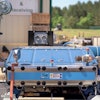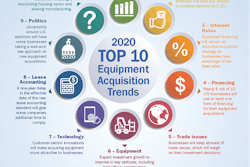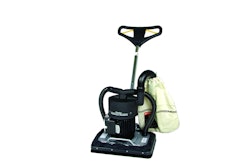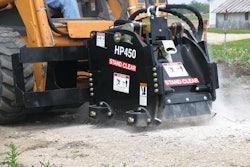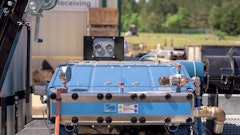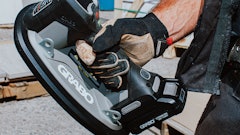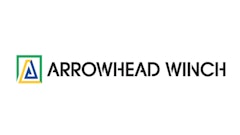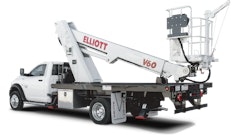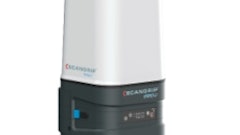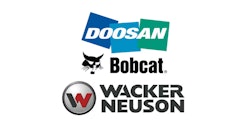Let's discuss successful fleet acquisition strategies in today’s economy. But before we start, let’s define what is today’s economy.
On the down side we have:
- Very competitive rental rates in most sectors
- More short-term daily and weekly rentals than monthly
- Less-than-desirable utilization factors
- Higher cost for both new and used equipment
- Banks still reluctant to loan money
On the plus side we have:
- More acceptance of rental by contractors
- New rental opportunities from contractors expanding into your territory
- Acceptable interest rates
- Small increases in rental rates as well as total rental revenue
- A pick up in construction work ranging from fair to very good depending on where you are located
There are a lot of factors to think about before deciding on required fleet changes and how to go about making them happen while still leaving you with a “bank acceptable” balance sheet and positive cash flow. And the only way you're going to reach a reasonable conclusion on the balance sheet and cash flow is if you project out your rental activity for the year including the timing of fleet changes throughout the year to see where you wind up.
When doing this type of analysis, it's normal to overestimate the revenue side of the equation. You listen to the economic talking heads of the day or the stock market gurus and you can’t help but be overly aggressive on revenue expectations. In other words, it's best to check out your projections by doing some homework first by using the Rouse reports which provide current data on rental rates, utilization, and used equipment prices. Rouse Asset Services provides this report free if you sign up on their website. They also provide regional information if you participate in their rental analytics program (they charge for this service). No matter how you look at it, there's nothing like using “real” data to assist in rental assumptions.
You can also check what the national rental companies are doing when they compile their quarterly data and estimates for the future, but let’s keep in mind there might not be a 100% correlation between your business and theirs.
One last source you should check out are the ARA Rental Metrics which contain the formulas used to calculate equipment cost, time utilization, dollar utilization, rate changes etc. It's a technical read, but you will sound like a pro when discussing rental topics in the future.
What I like to do to help make fleet change decisions is track (on a monthly basis) the historical cost of my rental fleet along with the related rental revenue, time and dollar utilization, plus my debt service requirements for each month. I do this for a year or the last 12 months and wind up with a trailing 12-month schedule of the historical results. I then take this historical data to determine how the changes I'm looking for in rates and utilization affect my operating results and debt service coverage. This is my starting point to determine how to project out each month in the rental projections for the next 12 months, which guide me in making decisions about fleet changes.
Before you can reach any conclusions, you need to spend some time digging into the fleet data by month, by Cat Class, to see which classes are underutilized and exactly where you are in terms of dollar utilization by class, keeping in mind the seasonality of the business, lost orders, hard-down units and historical weather conditions. This real data also takes into account discounted rental rates which take a big bite out of the bottom line. This data should all be available from your rental system and if it is not, that's a big problem that needs to be considered.
Doing this exercise for the trailing 12 months puts you in a position to make informed decisions about fleet additions and deletions that result in an acceptable balance sheet, debt service coverage and positive cash flow. Once you have this program laid out you can continue to update the results and check your overall rental trends for a 12-month period to see if they are moving up as you expected.
One more comment on seasonality: If you have a seasonal business, there will be months where you will not meet the debt service requirement and will have to partially fund debt service out of cash reserves. We have all been through this, knowing full well the remaining months in the year will have to make up the shortfall with higher rental volume and hopefully better rates. Thus it's best to not overestimate rental revenues unless there is at least a high probability you will hit the rental numbers required to meet the projection. Nobody wants to go through another round of issues with the banks and a lack of cash flow because the cost of fleet additions exceeds the revenues being brought in by the new additions, which can certainly happen in the current rental environment.
In short, do not overextend yourself if you cannot get rental rates that cover debt service.
Under current conditions, I believe the rental model is broken when you contemplate the cost of new equipment versus current rental rates. For example, if you purchase $100,000 of new equipment you have to bill and annually collect 25% of the cost of the equipment to cover a 60-month 5% loan on that equipment, which equates to 2.1% of rental revenue per month. Take into account the seasonality where you might not get that rate for some months and you will have to collect even more during the remaining months to reach that goal. In my experience, some of the equipment with the highest demand, under current conditions in the markets I'm familiar with, do not cover the nut. In other words, it's costing me money to own these new units when I add new units to the fleet.
Owning and managing a rental business these days is like trying to herd cats. Tough to do. Unless you have the financial capability to weather the storm, equipment decisions today are a very risky business from a financial viewpoint.
What can you do to successfully manage your fleet?
- Go through the exercise described above.
- Do not overextend yourself and always have rental units in the money in case you need to reduce the number of units in the fleet.
- If rental rates do not support the cost of a new unit, buy used units for your fleet.
- Determine where you're making good money and concentrate on those types of units.
- Keep your fleet rent-ready. Do not get behind the eight ball because you're not maintaining the fleet. Down units will kill your cash flow.
- Manage your business to move the trends in the right direction.
Right now, many of you are probably thinking along the lines of “Who is going to do all of this and keep it up to date?” Well, you are or you take run the risk of repeating the mess we were in a few years ago. If you need help I have access to experienced rental CFO types who can help you with this process. Contact me through Rental and I will put you in touch with them.
Fact: 51% of equipment manufactured in 2012 was purchased by rental companies. Sounds good, but only if this new activity increases the value of your business. We all lost a lot of sleep over the past five years and I for one plan to catch up on my sleep by closely monitoring the results I get from each Cat Class and making decisions accordingly.


